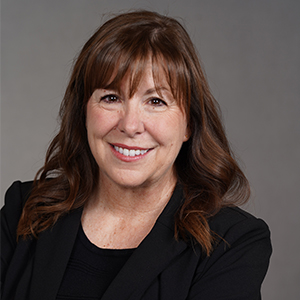In part 2 of a wide-ranging interview with Editor in Chief Sarah Wheeler, Brooke Anderson-Tompkins talks about the right time to start implementing AI and why she’s an AI optimist.
Anderson-Tompkins was president of 1st Priority Mortgage for 15 years and is a former chair of the Community Mortgage Lenders of America (now Community Home Lenders of America). She is now founder and CEO of Bridge AIvisory and will be a speaker at HousingWire’s AI Summit. She Part 1 of this interview is here.
This interview has been edited for length and clarity.
Sarah Wheeler: The idea of “responsible AI” points to how different AI is in scope and potential (for good and bad) compared to other kinds of technology. Can you remember another time when we would apply that kind of framework to a specific technology?
Brooke Anderson-Tompkins: This is a great point. I think the fact that AI is exponentially different than other technologies is why responsible AI (RAI) needs to be considered in the very beginning.
I would also suggest that one of the tenants of RAI is bringing in different people earlier to the process. If you look at project planning in general, bringing individuals to the table that may have been classically downstream of the project, bringing them in sooner is better. In the case of AI, a domain expert might be your closer or your processor if you’re looking holistically at how to truly enhance efficiency and effectiveness.
SW: What would you say to a company that is trying to decide if they should start using AI in some form or wait for a while to see what use cases are best for their business? Will they get left too far behind if they don’t jump in now?
BAT: Well, one of my favorite quotes from Berkeley was you don’t have to start in the deep end. [Berkeley’s Haas School of Business offers a certificate in AI business strategy and application] I think that you start simple, include your people early and often, and help them to overcome the headline that AI is going to take their job. Very few people work well in fear mode, so that needs to be part of the strategy in relationship to the adoption piece. You have to think about how you help the organization not be afraid of all the things that might be in the headlines, and then take steps to upskill and reskill.
One example I can offer is, building a prompt library, which is a gentle way to start. If there is an opportunity to use a large language model (LLM) and get accurate answers, that helps with efficiency, which is more likely done when you help build the appropriate prompts. Then people are going to lean in because they’re they’re going to see that there’s actually some relief instead of just learning and doing more.
I do think that it’s important to start now. And companies that do this, the pre-work could actually make the difference in defining the outcome of the AI project. There’s a statistic that says that 87% of AI use cases fail to come out of test now. That’s a huge number! Now, mind you, that stat is from last fall, but still, it’s a big number. So I think there’s no better time to start than the present. And not because I say so, but because the research supports it. But there are some alterations to the approach that can definitively have an effect on the outcome.
SW: For more mature businesses, what are some of the things they are grappling with?
I think it’s the use cases — do they actually play out the way that you originally identified? For example, data. I heard a quote the other day that data is the new oil. So, is the data in a format that’s readily usable? Or does it take more time, for example, and was that time built into the project, because they may or may not have recognized that as necessary when they were putting together the process.
I think that it’s unique to each organization on how mature they are in this process. And mature doesn’t necessarily mean age — it means if an organization has a greater propensity towards technology to begin with, their answers and their choices are likely going to be driven differently than organizations that may not have that underlying premise. And there are variations of risks associated with that.
SW: Are you an AI optimist or do you see danger ahead when it comes to AI?
BAT: My glass is always half full! And, I think it serves business well to be an optimist — and also be a realist. But in this particular case, I would say that I believe in the tech-forward approach with the ‘heart of human’ at its core.
Good and evil have existed since the beginning of time and the stakes here could potentially be exponentially higher. So as we go well beyond the industry changes or challenges that that we’re accustomed to, I absolutely feel emphatically that we need to get it right. And getting it right is going to take a village. And we’re in housing — we know how to build villages! So now is actually a great time to lean into possible.






